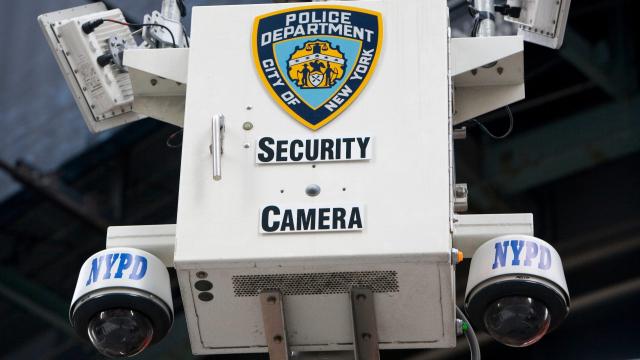For years now, New York City has tried to distance itself from its embattled and racist Stop and Frisk policing tactics that were responsible for creating over 100,000 interactions with police annually during the early 2000s. Though these physical stops have mostly tapered down, activists say it’s been replaced by a digital equivalent with equally as troubling racial biases: facial recognition.
A new report and accompanying interactive map released this week by Amnesty International buttressed that point, with research finding greater levels of facial recognition exposure in nonwhite neighbourhoods. In NYC’s Bronx, Queens, and Brooklyn boroughs, for example, higher proportions of nonwhite residents mapped onto higher concentrations of facial recognition compatible CCTV cameras.
“We now know that the communities most targeted with stop-and-frisk are also at greater risk of discriminatory policing through invasive surveillance,’ Amnesty International Artificial Intelligence and Human Rights Researcher Matt Mahmoudi said in a statement. “The shocking reach of facial recognition technology in the city leaves entire neighbourhoods exposed to mass surveillance.”
Amnesty International conducted the study using crowdsourced data on public camera locations pulled from thousands of volunteers working with its Decode Surveillance NYC project. In total, the volunteers have mapped out more than 25,500 CCTV cameras spread out across the city’s five boroughs.
These findings on their own aren’t particularly revelatory. Local security advocates and experts like Matt Mitchell of the anti-surveillance nonprofit CryptoHarlem have, for years, spoken out against pervasive facial recognition plaguing New York’s Harlem neighbourhood. “You can’t buy a bag of chips in Harlem without being surveilled,” Mitchell told Motherboard back in 2018.
Nonetheless, Amnesty’s searchable map provides an explicit, in-your-face illustration of New York’s surveillance apparatus residents or visitors can easily apply to their daily lives. Whether it’s discovering how many public cameras are between you and your favourite Mexican restaurant (in this writer’s case, around six) or comparing facial recognition exposure between neighbourhoods, the tools provide a useful illustration of our ubiquitous surveillance state.
Public facial recognition on its own already comes attached with a laundry list of potentially troubling civil liberty and privacy concerns made all the more chilling when applied to a political protest. Using the new tools, Amnesty researchers determined demonstrators at the 2020 Black Lives Matter protest would have spent the vast majority of their time exposed to some form of public facial recognition.
“When we looked at routes that people would have walked to get to and from protests from nearby subway stations, we found nearly total surveillance coverage by publicly-owned CCTV cameras, mostly NYPD Argus cameras,” Mahmoudi said.
In the BLM case, the theoretical concerns around facial recognition took on an all-too-real element. In the months following the protest, reports emerged detailing how the NYPD had used facial recognition to track a prominent protest organiser. Police eventually used that data to deploy more than 50 officers and dogs to surround his Hell’s Kitchen apartment.
With those examples in mind, we decided to step into a time machine and use Amnesty’s new tool to determine the levels of surveillance some of NYC’s most historic marches would have faced if they occurred in 2022.
75% of the 1917 Silent Protest Would Have Been Exposed to Facial Recognition
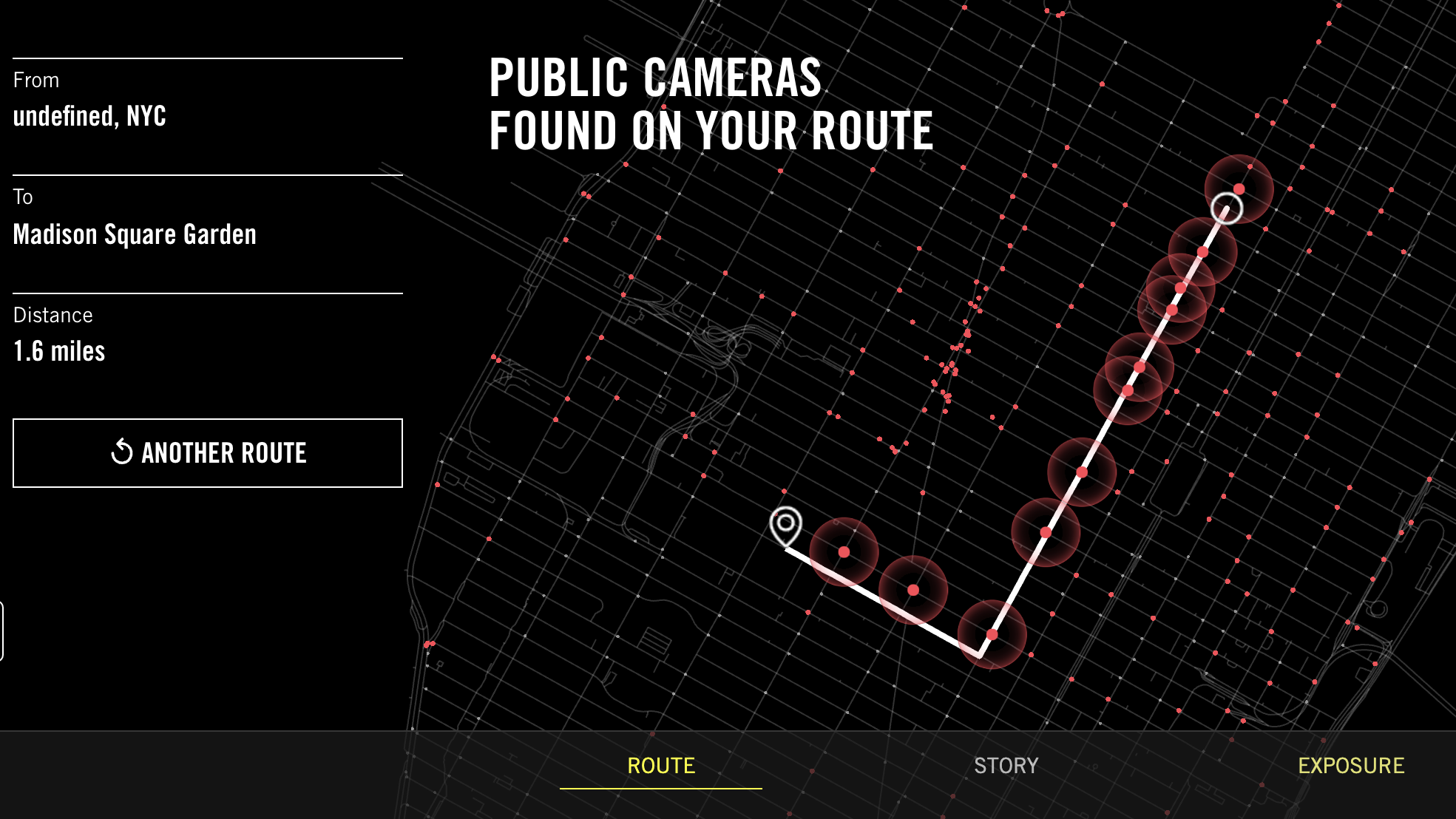
Over 100 years ago, an estimated 10,000 Black Americans filled NYC streets in one of the first major U.S. protests to raise awareness of violence against Black people. Organised by the NAACP, the protest was marked by its organised silence, with some of the only sound coming from drums located at the front of the march.
Had the march occurred in the modern era, around 75% of the protestors’ routes would have been exposed to facial recognition. During the course of the day, protests would have to pass through at least 11 intersections equipped with public cameras.
60% of New York’s 1982 March Against Nuclear Energy Would Have Been Exposed to Facial Recognition
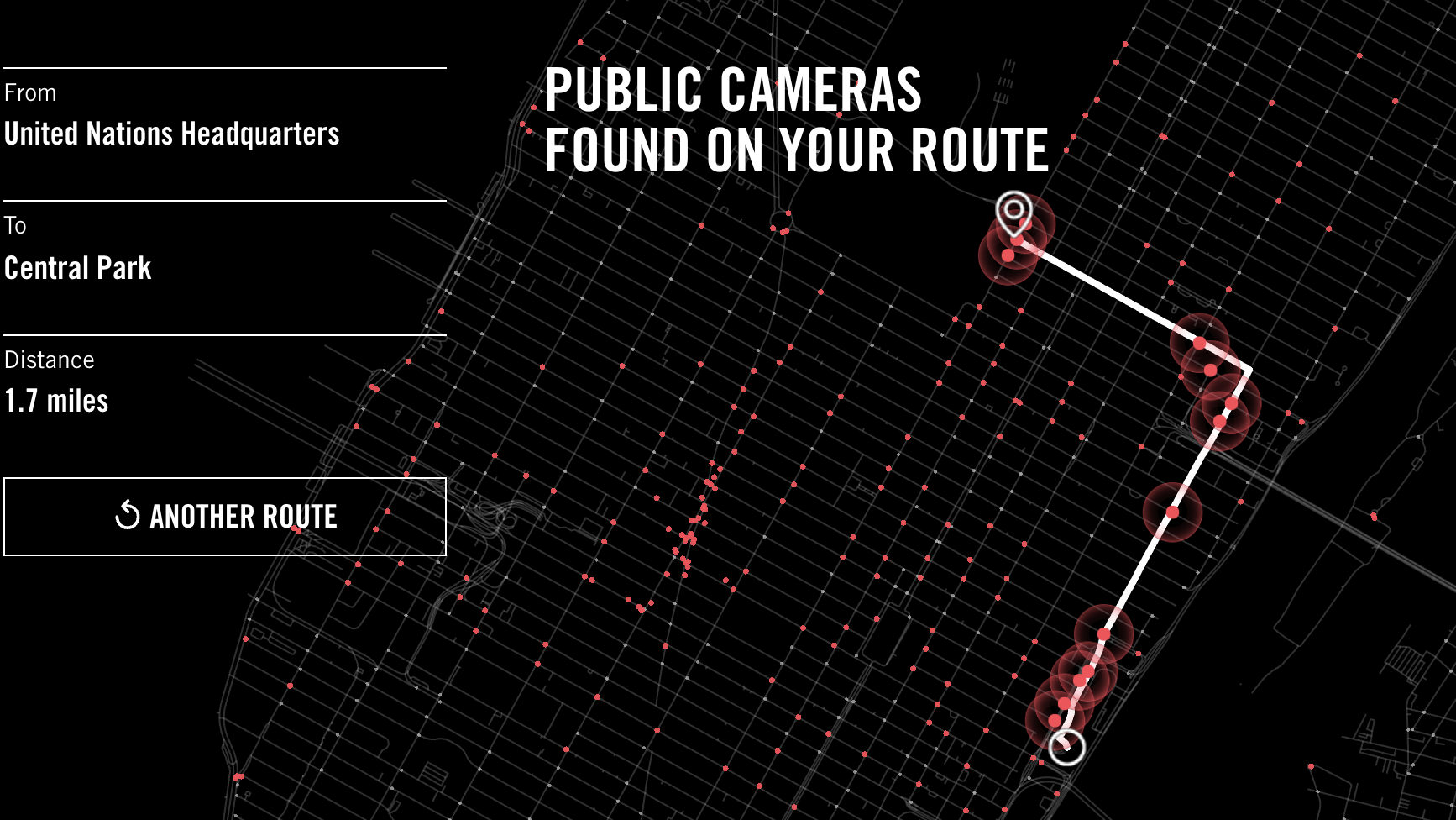
Somewhere around one million demonstrators reportedly congregated around Central Park on June 12, 1982, to show their opposition to nuclear weapons. At the time, the march, which began near the United Nations building, was the largest in U.S. history. If that 3 km march were to occur today, demonstrators would come across at least 12 intersections with public cameras. In total, 60% of their journey would be exposed to facial recognition.
A Quarter of the 2003 Anti-War Protests Would Have Been Exposed to Facial Recognition
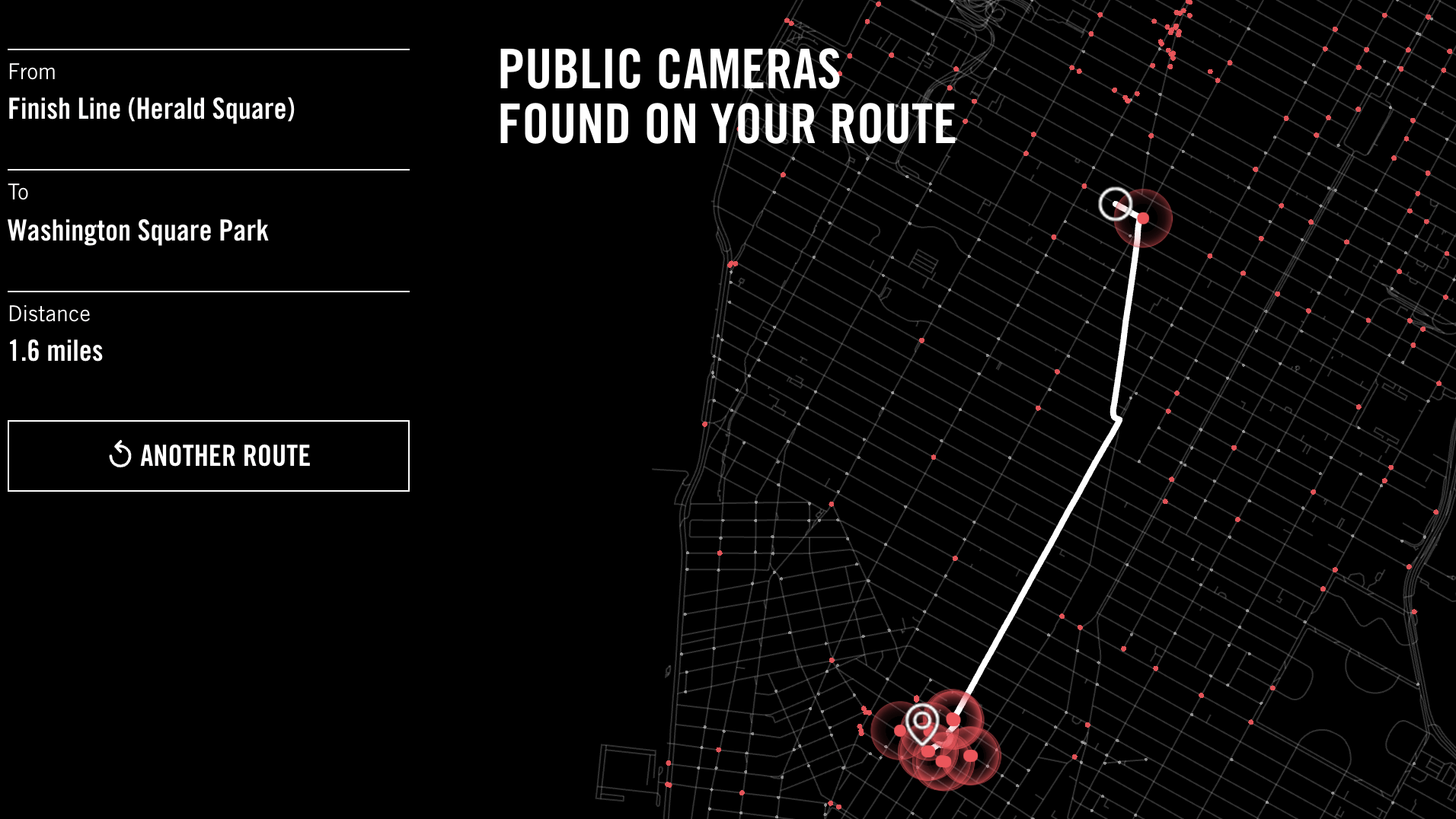
In the Spring of 2003, hundred of thousands of protestors gathered for the most significant anti-war protest since the U.S. invaded Iraq following 9/11. Similar marches occurred the same day in pockets all across the country. In New York, the official march took place along Broadway Street over a stretch of 3 km starting at Herald Square and ending in Washington Square Park.
Unlike most other protests listed on this slide show, the 2003 anti-war event, if conducted in 2022, would actually face comparatively little facial recognition exposure. According to the interactive Amnesty map, just 25% of that route would be exposed to facial recognition. Though there are exceptionally large clusters of public cameras in and around Washington Square Park, the route leading towards it appears surprisingly sparse. That’s something protest organisers may want to keep in mind in the future.
40% of the 2014 People’s Climate March Would Have Been Exposed to Facial Recognition

Though it’s difficult to pin down any one exact route for the 2014 climate change march, some news reports claim demonstrators travelled roughly from Columbus Circle on the southwest side of Central Park to the Far West Side. The marchers had gathered to show their collective frustration over the international community’s seeming unwillingness to move the needle on policies aimed at curbing climate change.
If that march took place in 2022, around 40% of it would have been exposed to facial recognition. Though the middle portion of the route appears relatively free of public cameras, the start and end destination is peppered with them, like spots on a leopard.
Around 90% of the 2017 Women’s March Would Have Been Exposed to Facial Recognition
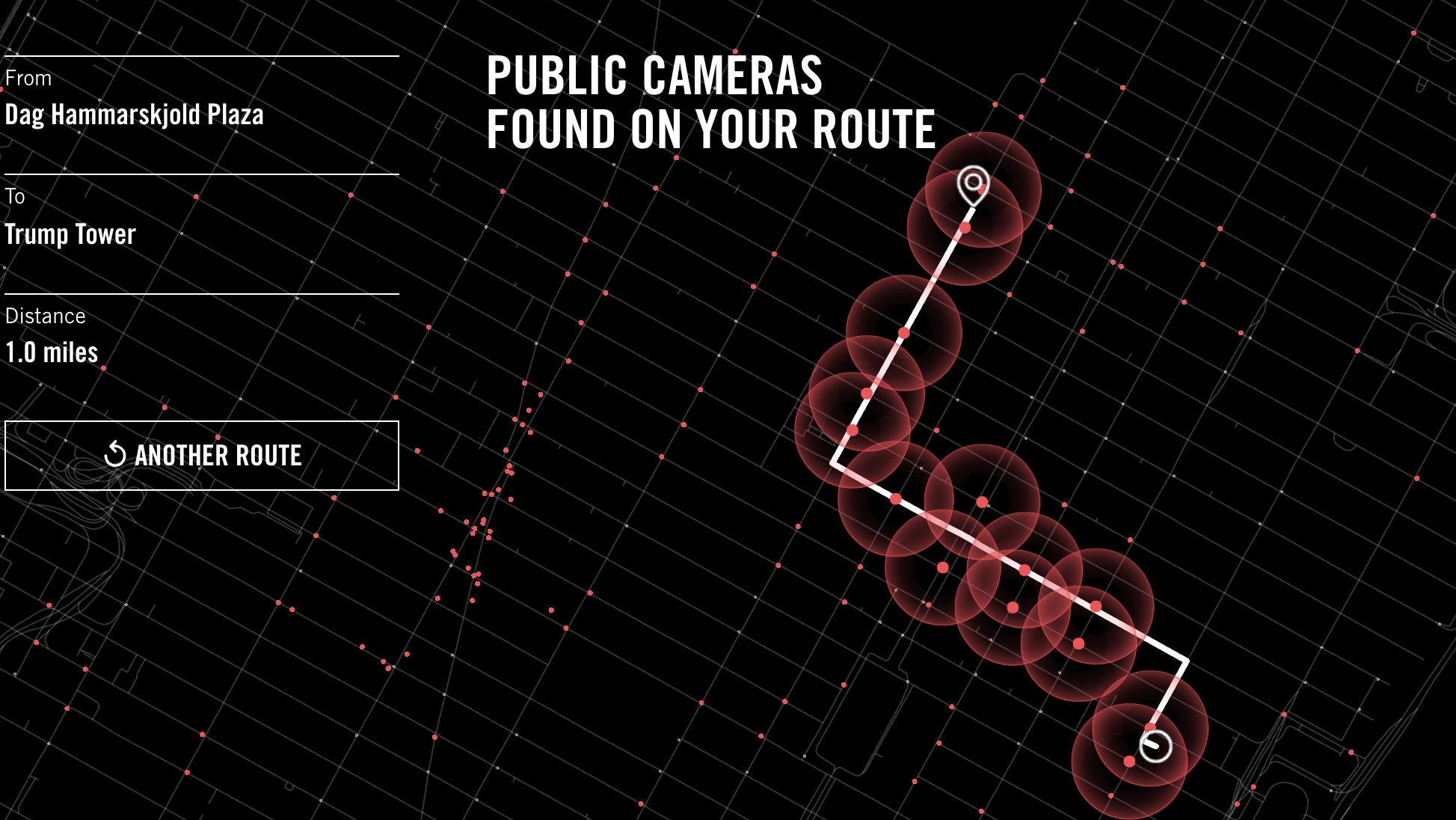
These last two more recent marches occurred just five and four years ago respectively meaning the facial recognition they would experience in 2022 may look awfully similar to what protestors actually faced on the ground. In 2017, an estimated 400,000 women marched through lower Manhattan voicing support for legislation and policies benefiting women and the LBGTQ community, among others. The massive march, which occurred in tandem in Washington D.C. and other cities was seen largely as a rebuke of then recently elected President Donald Trump.
The demonstrators marched from Dag Hammarskjold Plaza, just north of the United Nations building, about one mile north to Trump Tower. If conducted today, around 90% of that route would have been exposed to facial recognition, with dense clusters of public cameras lining just about every intersection from start to finish.
70% of The 2018 March For Our Lives Protest Would Have Been Exposed to Surveillance
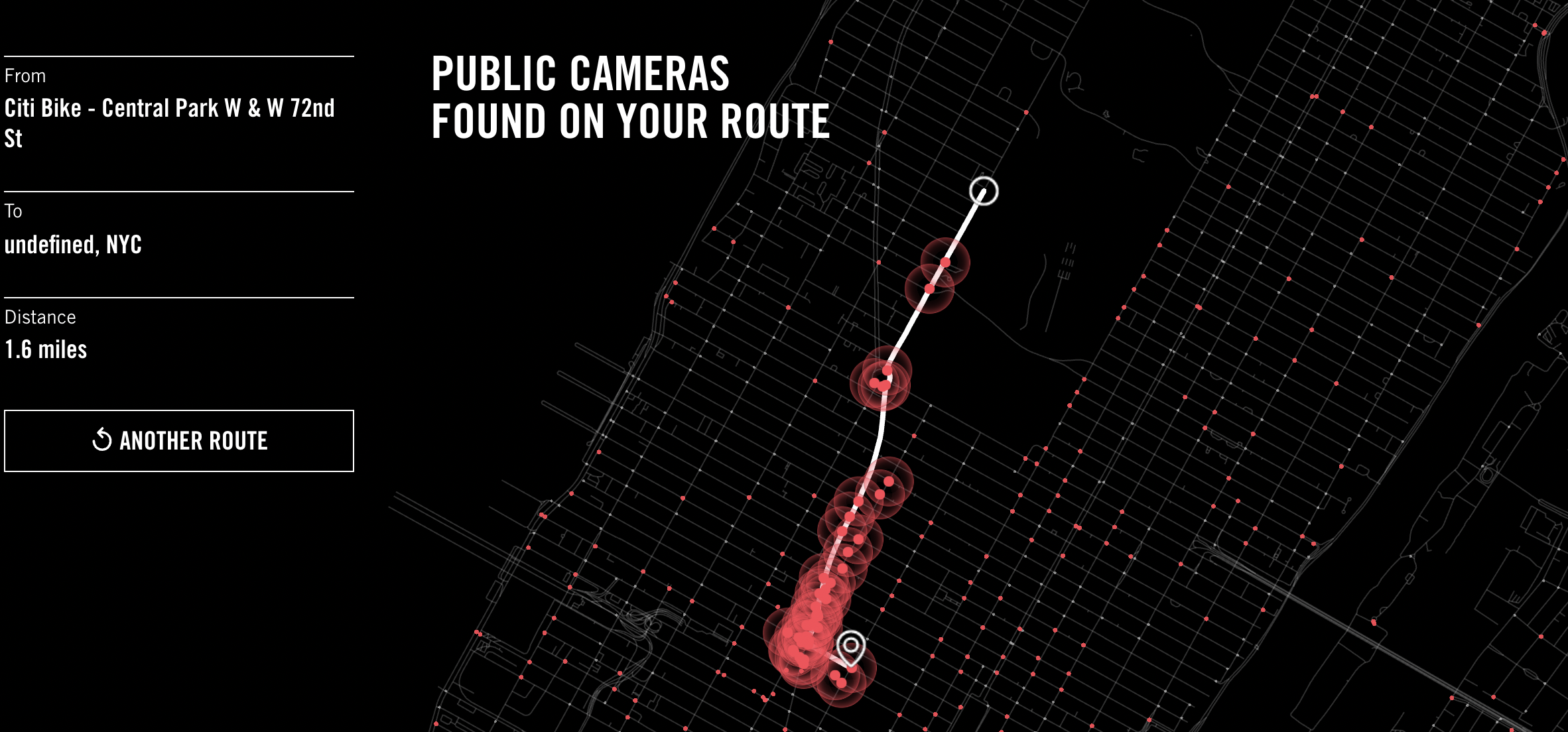
In March 2018, a little more than a month after a gunman left 17 people dead at Marjory Stoneman Douglas High School in Florida, students and young people drove forward a mass mobilisation of demonstrators pleading with lawmakers for tighter firearm regulations. The NYC arm of the march reportedly began near the top of Central Park and ended around 3 km away on 43rd street. That route is littered with dense clusters of pubic cameras at intersections, many so close together they overlap each other’s exposure areas. If conducted today, around 70% of the March for our Lives protest would have been exposed to facial recognition.
